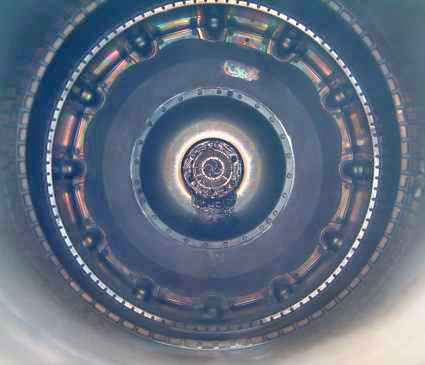- In reviewing crash footage taken by an ABC news
crew, Corley was able to track the trajectory of the fragments he
studied--including a section of the landing gear and part of an
engine--as they tore through the South Tower, exited from the
building's north side and fell from the sky.
-
- FROM:
http://www.popularmechanics.com/science/defense/1227842.html?page=3&c=y
-
- Just to help PM here is a photo of the engine part
that fell into the NYC street:
-
-

-
-
-
- Best way to identify a damaged engine portion is to
identify undamaged parts on it.
-
- LIKE:
-
-

-
-
-
- From:
http://www.aeromat.fr/frameset_global.htm
Click on 'Products' & look for photo CFM56-3 LPT Shaft
-
- LIKE:
-
-

-
-
- From:
http://www.b737.org.uk/powerplant.htm
(Very top of website page also offers a view of the Pentagon engine.
However, without the missing Pentagon Citgo videos it is impossible to
identify positively the Pentagon attack
- aircraft.)
-
- Fuel nozzles were also CFM56 but the WTC picture is
crystal clear: No Boeing 767-200 struck the South Tower on 9/11. Would
somebody tell Popular Mechanics?
-
- FOR THOSE CURIOUS ABOUT THE LANDING GEAR
ASSEMBLY:
-
-

-
-
-
- Count the number of grooves in the tire: then go
to
-
http://www.b737.org.uk/landinggear.htm and look at the tires in the landing
gear photo. You be the judge.
-
-
- THE FINAL WORD is from
http://www.b737.org.uk/powerplant.htm
-
- The original choice of (Boeing 737-100) powerplant
was the Pratt & Whitney
JT8D-1, but before the first order had been
finalized the JT8D-7 was used
for commonality with the 727.
-
- The sole powerplant for all 737's after the -200 is
the CFM-56.
|